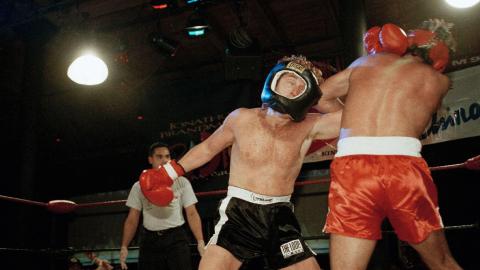7/7 London Bombings
We are at war and I am a soldier - now you too will taste the reality of this situation.
Mohammad Sidique Khan (7/7 Bomber)
In London, at 8.50am on Thursday 7 July, three bombs exploded simultaneously, destroying sections of three different London Underground trains. One was detonated just outside Liverpool Street station, the other outside Edgware Road and the third between Kings Cross and Russell Square. Around an hour later at 9.50am there was an explosion on the top level of a double-decker bus in Tavistock Square near Kings Cross, caused by a similar device to the ones used on the underground.
The explosions left 52 innocent people dead and over 700 injured. Chaos erupted across the capital, echoing the horrific terrorist attacks faced by New York four years before, on 11 September 2001. The worst bombing in London since WWII, it brought the city's public transport network to a standstill, with the complete closure of the underground system and Zone 1 bus networks forcing thousands of commuters to walk the long journey home.
In the immediate aftermath of the bombings victims on the tube used fire extinguishers to break down train doors. Passengers on the Piccadilly line train between King's Cross to Russell Square who were able to walk felt their way in the darkness down the length of the tunnel back to ground level. Confusion and shock struck London on this summer morning with the three separate incidents initially being blamed on train collisions, electrical failures and power surges. The following day the Metropolitan Police stated that it could not be ruled out that the attacks were the result of suicide bombings.
The bombers were later confirmed to be Muslim extremists. 30 year old Mohammad Sidique Khan, 24 year old Shehzad Tanweer, 19 year old Germaine Lindsay and Hasib Hussain the bus bomber was only 18 years old. Following the events of 7/7 all four bombers were found to be British citizens said to be leading normal every day lives, including Khan who was a respected teaching assistant in his native Beeston, Leeds.
Two of the bombers also resided in North Yorkshire near to where the organic peroxide based devices were later found to have been constructed. On 12 July police discovered much of the bombing equipment still in tact in a rented flat in the Hyde Park area of Leeds.
Khan, Tanweer and Hussain were all of Pakistani descent and Jamaican-born Briton Germaine Lindsay of Huddersfield, West Yorkshire, was a convert to Islam. The investigation into the bombings found that both Mohammad Sidique Khan and Shehzad Tanweer had previously spent several months in Pakistan where it is very likely that they were in contact with Al-Qaeda and went through extensive extremist training.
In September 2005 the television station Al-Jazeera broadcasted Mohammad Sidique Khan speaking in a pre-recorded video message, revealing his motives for becoming a soldier - Until you stop the bombing, gassing, imprisonment and torture of my people we will not stop this fight.
The 7/7 bombings were subsequently linked with the attempted bombings of 21 July 2005. Only two weeks after the initial attacks, failed devices were found in similar locations; one on a double-decker bus and three others on trains on the London Underground. There was some speculation that the attacks on 21 July were the work of the same Islamist cell, although another theory is that the would-be bombers were simply copycats.
When the verdict of the inquests into 7/7 was released in May 2011, it was welcomed by the victims' families, but some said that they still feel there should be a full inquiry into the bombings. Despite the fact the Prime Minister at the time, Tony Blair, promised that all evidence would be published, this has yet to happen.
As with the terrible events of 9/11, there are conspiracy theories surrounding the events of that day, including so called co-incidences. One example concerns British crisis management specialist Peter Power, who on that very day had planned a crisis management simulation drill.
In the immediate aftermath of the attacks candlelit vigils were held in the capital and the Union flag was flown at half mast in remembrance of those who died. In 2009, the Prince of Wales paid tribute to the bravery of the bereaved families and survivors of the bombings as he unveiled a memorial in Hyde Park dedicated to the 52 people who died on 7 July 2005.
Did you know?
A suspected member of al-Qaeda reportedly entered the UK via a Channel port two weeks before the bombings, but was not put under surveillance. He flew out a couple of hours before the bombs went off., Police analysed more than 6,000 CCTV tapes., Vodafone's mobile telephone network reached capacity at about 10:00am on the day of the incident. The firm was forced to initiate emergency procedures to prioritise emergency calls.
















